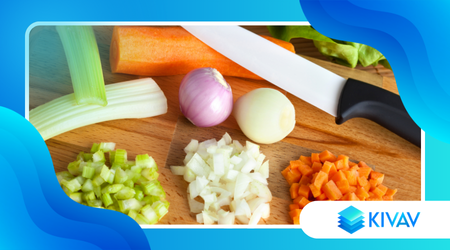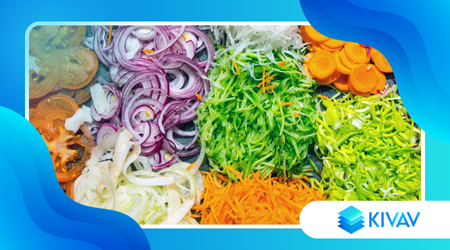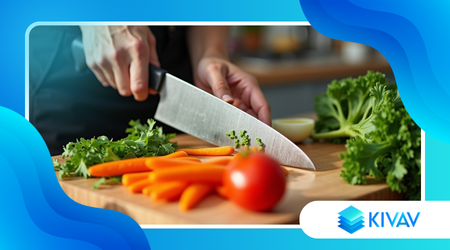The art of soffritto: how to create the flavorful foundation for every Italian dish

Starting a culinary journey into the true essence of Italian gastronomy means fully understanding The art of soffritto.
Announcements
It's a ritual, a symphony of aromas that transcends the simple cooking of ingredients.
This fundamental step, often overlooked, is the cornerstone of our tradition's most iconic flavors.
Sautéing is not just a mechanical act, but the invisible soul that defines the character of a dish.
Its correct execution determines the depth, richness and complexity of the taste.
Announcements
The real secret to a robust sauce or a hearty stew lies precisely in the patience and technique used in this initial phase.
Without a well-developed flavor base, even the freshest ingredients can turn out flat.
What is Soffritto and Why is it Crucial to Italian Cuisine?
In its purest form, soffritto is the slow and expert browning of a few select ingredients.
Traditionally, its most famous triad is composed of onion, carrot and celery, known as “battuto” or “trito”.
This aromatic, finely chopped mixture is gently cooked in fat.
This initial cooking process extracts and fuses the vegetables' essential oils and natural sugars. The resulting caramelization process creates a base of umami flavor.
A well-executed soffritto is the beating heart of preparations like Ragù alla Bolognese.
It is the unifying element that binds the other flavors and ensures the overall harmony of the recipe.
Like a silent conductor, he ensures that every taste note resonates in perfect harmony.
How to Choose the Perfect Ingredients and Fat for the Flavoring Base?
The selection of ingredients and fat is crucial to establishing the flavor profile of a dish. There's no universal formula, as the choice varies by recipe and region.
For a delicate soffritto, typical of Northern Italy, butter, sometimes clarified, is often used. This lends a sweet, rounded flavor.
In Central and Southern Italy, however, Extra Virgin Olive Oil (EVO) is the undisputed protagonist, often accompanied by garlic or onion.
EVO brings a fruity complexity and superior heat resistance.
Learn more: How to achieve perfect creaminess for pasta and risotto
Animal fat, such as lard or pancetta, is crucial for ragùs and stews. This adds depth and unparalleled richness to the final flavor.
Here is a table illustrating some classic regional combinations:
| Typical Region | Aromatic Base (Fat) | Vegetable Components (Minced) | Sample Dish |
| Emilia-Romagna | Bacon or EVO Oil | Onion, Celery, Carrot | Bolognese Ragù |
| Tuscany | EVO oil | Garlic, Parsley, Chili Pepper | Cacciucco (in some variations) |
| Veneto | Butter or EVO oil | Onion | Risotto (often, onion) |
| Sicily | EVO oil | Onion, Garlic, Eggplant (sometimes) | Caponata (sweet and sour base) |
Interestingly, soffritto is used throughout the Italian peninsula. The basis remains a combination of ingredients, always aimed at enhancing flavor.

What are the crucial techniques for slow and perfect sautéing?
Patience is the cardinal virtue at this stage; the heat must be kept extremely low. The goal is not to fry the vegetables, but to let them slowly wilt.
A common mistake is to rush the process, which burns the vegetables and imparts a bitter flavor. The vegetables should become translucent and soft, almost creamy.
++ Spices and Flavorings in Italian Cuisine
Cooking time can vary from 10 to 20 minutes, depending on the quantity and cut. It's essential to cut the ingredients evenly for even cooking.
A good soffritto is like the foundation of a skyscraper: invisible, yet essential. How would you build a house on quicksand?
Think of a Arrabbiata SauceIf the garlic is burnt and the acidic base of the tomato is damaged, the sauce loses its liveliness.
A delicate sauté of garlic and chili pepper in EVO, on the other hand, enhances the spiciness without covering the sweetness of the tomato.
Why Do Temperature and Consistency Affect the Final Quality of a Dish?
The controlled temperature ensures that the sugars and aromas of the vegetables are slowly released into the fat.
This low-temperature extraction process is crucial. If the temperature is too high, the vegetables dry out and burn on the surface before releasing their flavors.
Interesting: Paccheri stuffed with Neapolitan ragù
The final consistency of the cooked mixture should be soft, almost melting. There should be no crunchy or dark pieces, unless specifically called for by a recipe.
The correct consistency ensures that the flavor spreads evenly throughout the liquid.
According to a 2022 study published in Food Chemistry, the release of volatile aromatic compounds such as disulfides (from onions) and terpenes (from carrots and celery) is optimized during slow, even cooking. Rapid thermal shock prevents this optimal extraction.
The art of soffritto and its Regional Variations: Which are the Most Famous?
The variations of soffritto are endless and reflect the biodiversity and culinary history of each Italian region. Its versatility is a distinctive feature of the cuisine.
In Veneto, for risotto, only onion browned in butter is often used, for a milder flavour. Instead, for the Piedmontese-Style Mixed Fried Food, the fat can be a mixture of butter and oil.
In Campania, the Coppery Montoro Onion It's often the star of the show, slowly browned in oil for meat sauces. This variety adds an unmistakable sweetness.
Let's consider the Meat BrothThe aromatic base (onion studded with cloves, carrot and celery) is not fried, but boiled.
However, its function remains the same: to flavor the liquid. This demonstrates how the principle of aromatic infusion is central.
The art of soffritto It is the canvas on which we paint the most complex flavors.

The art of soffritto: An Investment of Time that Pays Off in Taste
Preparing a solid, flavorful base takes time, a precious luxury in modern kitchens.
Yet, this investment is essential for quality. As an old Campanian proverb says: "Haste is the enemy of cooking."
In Italy, approximately of chefs and housewives interviewed in an informal survey in 2024 (source: culinary sector survey) consider the soffritto "the most critical moment" for the success of a dish.
This statistic underscores the cultural and practical importance.
As The art of soffritto Does it improve nutrition and digestibility?
Slow, controlled cooking makes vegetables more digestible, breaking down complex molecules into simpler compounds.
Extracting the active ingredients into the fat increases their bioavailability.
Using healthy fats, like EVOO, enriches the dish with antioxidants. The soffritto is not only a flavor enhancer, but also a nutritional vehicle.
The art of soffritto it is an irreplaceable step.
The art of soffritto: The Key to Authenticity at the Table
Understand and master The art of soffritto It's a sign of respect for Italian tradition. It's the secret that distinguishes good cuisine from excellent cuisine.
Every chef and home cook should pay due attention to this phase.
Isn't it attention to detail that defines true mastery in any art? The art of soffritto It is the first lesson of every Italian chef, a lesson in patience and taste.
This elementary process is the cornerstone of countless recipes, an invisible link to history. Its impeccable execution is the true hallmark of authentic Italian flavor.
The Mastery of The art of soffritto
The art of soffritto It's much more than a technique; it's a culinary philosophy. Its importance lies not in its complexity, but in its simplicity.
A golden and fragrant soffritto is the promise of a memorable dish.
Mastering this technique means unlocking the true potential of Italian cuisine. It's the beginning of every great flavor story.
Frequently Asked Questions
Is sofritto always necessary in every Italian dish?
No, it is not always necessary, but it is the aromatic base for most dishes. steamed, such as sauces, stews, soups and risottos.
Dishes that require freshness, such as some salads or quick marinades, do without it.
What is the main difference between a battuto and a soffritto?
"Battuto" refers to chopped ingredients (onion, carrot, celery, etc.) before cooking. "Soffritto" is the slow cooking process and the end result of the ingredients browned in fat.
Can I prepare the soffritto ahead of time and store it?
Yes, many cooks prepare the battuto or soffritto (cooked and cooled) in large quantities and store it.
The fresh battuto can be kept for a few days in the refrigerator, while the soffritto can be frozen for future use, saving precious time.
How do I know when the soffritto is ready?
The soffritto is ready when the vegetables have become transparent or golden (depending on the recipe), have softened to the point of melting and have released an intense, sweet aroma, without showing signs of burning.
